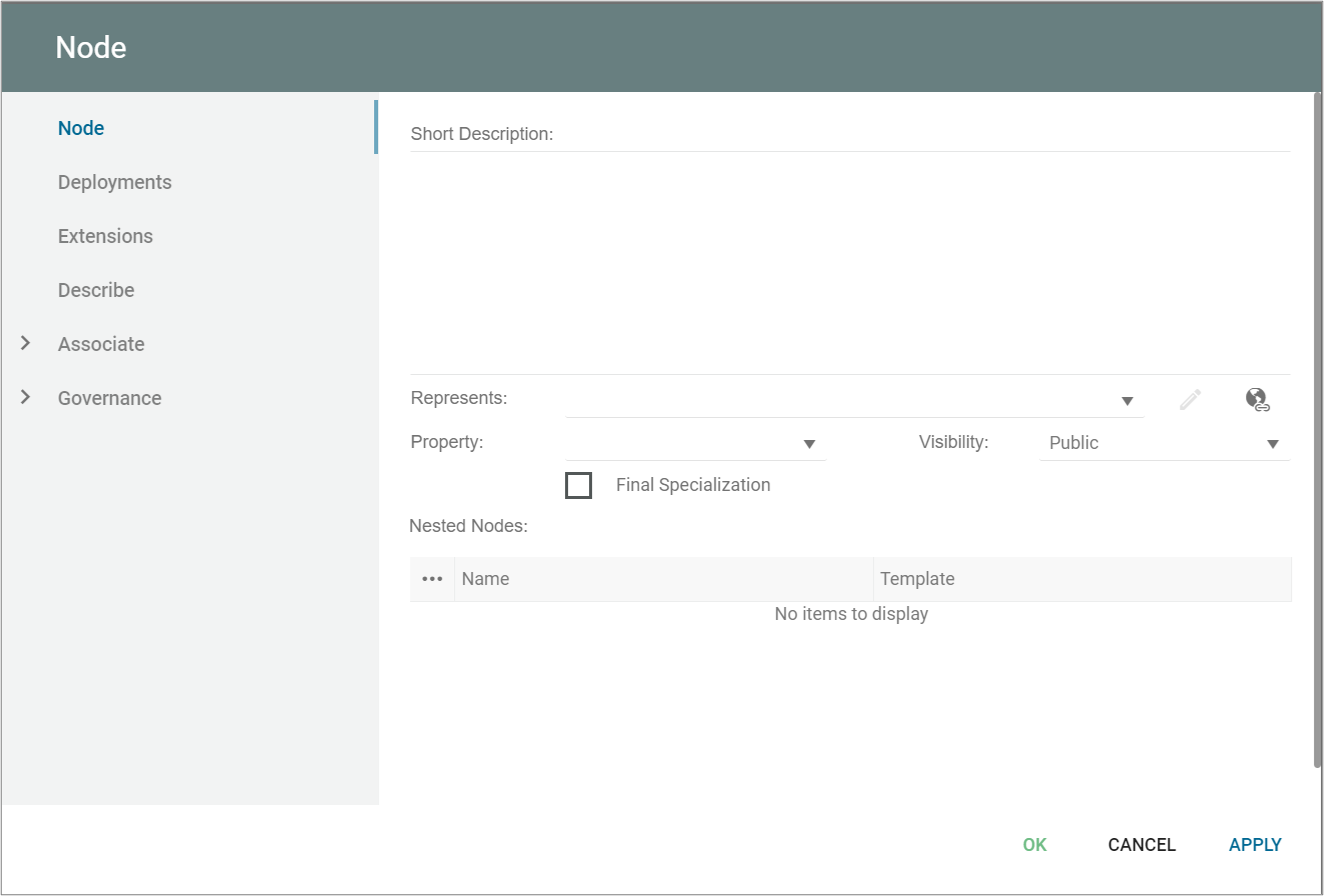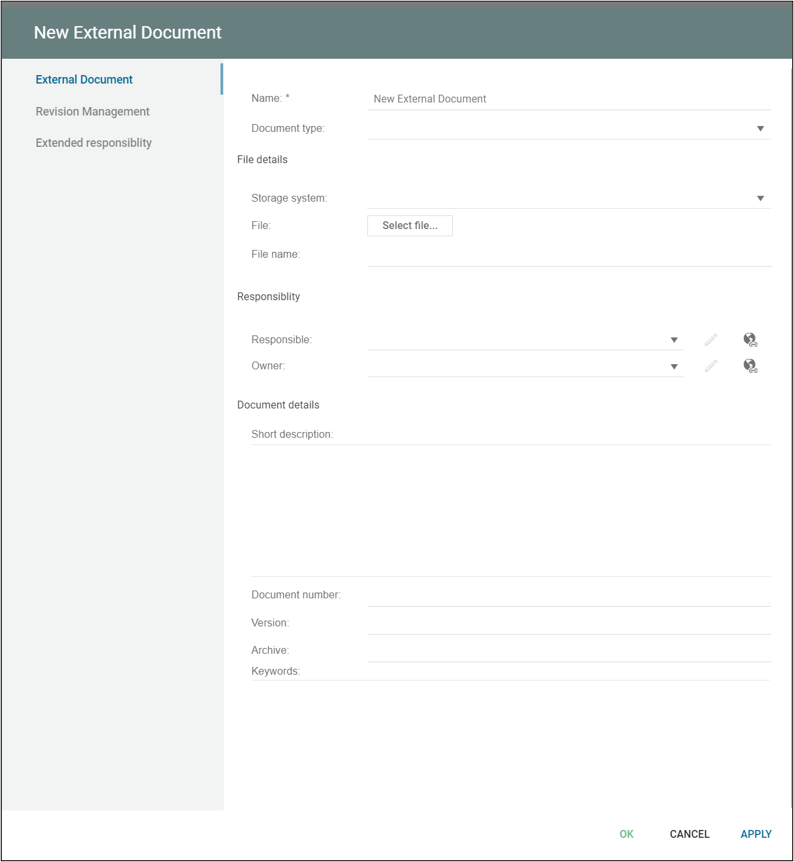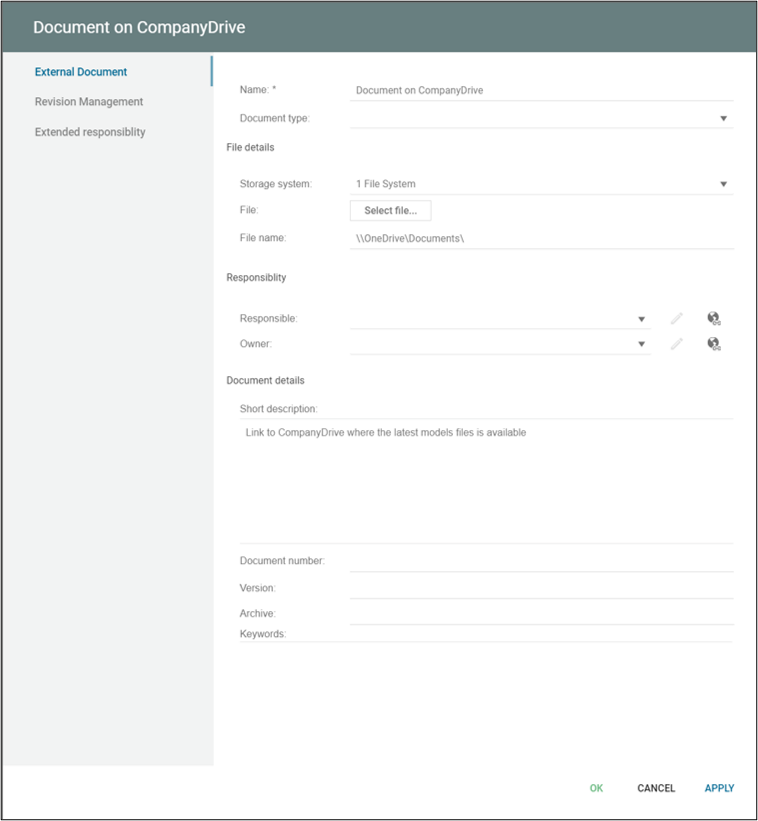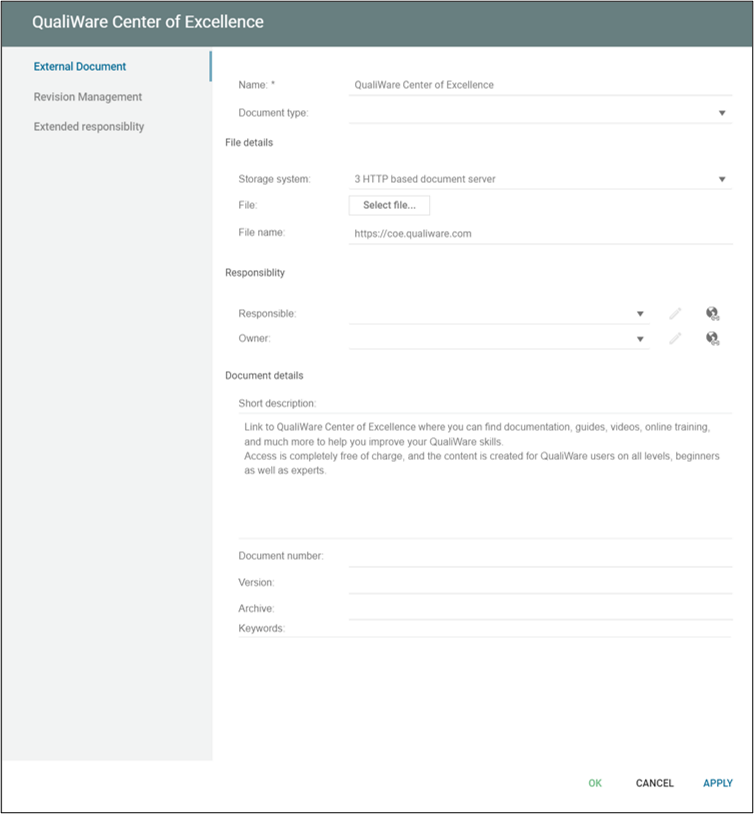An Event is something that happens during the course of a business process. These Events affect the flow of the Process and usually have a cause or an impact. The term event is general enough to cover many things in a business process. The start of an activity, the end of an activity, the change of state of a document, a message that arrives, etc., all could be considered events. However, BPMN has restricted the use of events to include only those types of events that will affect the sequence or timing of activities of a process. BPMN further categorizes Events into three main types: Start, Intermediate, and End. Start and most Intermediate Events have Triggers that define the cause for the event. There are multiple ways that these events can be triggered (Start Event Triggers and Intermediate Event Triggers). End Events may define a Result that is a consequence of a Sequence Flow ending.
On the Event tab of the Event object, choose the appropriate Event Type of Start, End, or Intermediate.
If Start for Event Type is selected, then Start Trigger in the Common Event Details can be used to specify the type of Starting event (i.e., applicable values are None, Message, Timer, Conditional, Signal, Multiple).
If End for Event Type is selected, then the Result field in the Common Event Details can be used to specify the type of Ending Event (i.e., applicable values are None, Message, Error, Cancel, Compensation, Signal, Terminate, and Multiple).
As the name implies, the Intermediate Event indicates where something happens (an Event) somewhere between the Start and End of a Process. It will affect the flow of the Process, but will not start or (directly) terminate the Process. Intermediate Events can be used to:
Show where messages are expected or sent within the Process,
Show where delays are expected within the Process,
Disrupt the Normal Flow through exception handling, or
Show the extra work required for compensation.
If Intermediate for Event Type is selected, then the Intermediate Trigger field in the Common Event Details can be used to specify the type of Intermediate Event (i.e., applicable values are None, Message, Timer, Error, Cancel, Link, Compensation, Signal, and Multiple).
The Throw checkbox within the Common Event Details permits the QualiWare user to specify if the trigger is being thrown to the next Activity in sequence, versus the default would be Catch (i.e., without the Throw checkbox turned on).
 Node properties
Node properties





